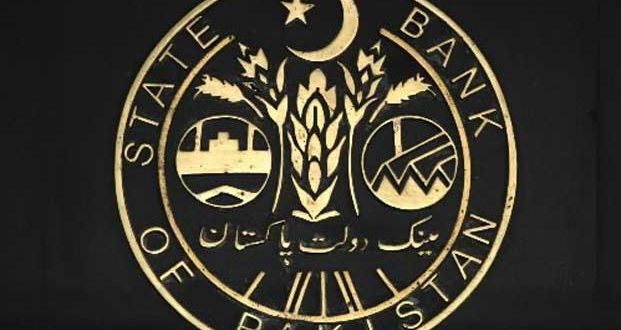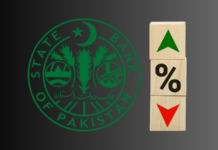
LAHORE: The State Bank of Pakistan (SBP) on Friday announced it had increased the policy rate by fifty basis points to 6.50 percent for the next two months.
In a press release issued on Friday, the central bank said the country’s economic growth provisionally was expected to reach a thirteen-year high of 5.8 percent for outgoing financial year 2017-18.
SBP said the headline inflation is expected to remain well below the annual target of 6.0 percent for the rest of the financial year 2017-18.
It said balance of payments had worsened due to a sharp rise in global oil prices and limited financial inflows even though exports had risen during this period and imports had somewhat been constrained.
Also, the fiscal deficit was now projected to stand at 5.5 percent of GDP against the original target of 4.1 percent for FY 2017-18 on back of higher level fiscal expansion than previously envisaged.
As per the central bank, these twin deficits were representing the high aggregate demand in the country were adversely affecting the near-term macroeconomic stability.
Regarding CPI inflation, it stood around 3.8 percent during the first ten months (July-April) of FY 2017-18 courtesy of low food inflation.
Average food inflation was recorded at 1.8 percent for July-April FY 2017-18, although year-on-year inflation was close to zero in March and April 2018, said SBP.
The central bank added “this has been possible due to adequate stocks of wheat and sugar along with smooth supply of perishables. Contrary to this, average of YoY NFNE-core inflation during the last two months has risen to 6.4 percent, which reflects the building up of inflationary pressures in the economy.
A significant change in the outlook for international oil prices with its impact on upward adjustments in domestic oil prices, a strong demand, the lagged pass-through of exchange rate adjustments, food inflation maintaining its current course and the stoking of survey-based measures of inflationary expectations will largely determine the inflation path in the remaining period of FY18 and for FY19. Conditional upon these developments, the average inflation for FY18 is projected to remain within SBP’s model-based range of 3.5-4.5 percent whereas the average FY19 inflation is estimated to be marginally above the annual target of 6 percent.”
Agriculture sector not only saw a notable improvement over last year, but crossed the annual growth target of 3.5 percent, said the central bank.
Industrial sector grew by 5.8 percent, due to robust construction activity and significant improvement in large-scale manufacturing (LSM), said SBP.
Thanks to gains in the commodity-producing sector pushed by growing aggregate demand saw growth in services to 6.4 percent.
However, SBP was downbeat about the government’s growth target of 6.2 percent for next financial year 2018-19 and said per its assessment it was ambitious and was contingent on managing increasing pressures on the external account front and ensuring average inflation was held close to its target in FY19.
The central bank shared broad money supply saw a net expansion of only 4.9 percent during 1st July to 18th May FY 2017-18 against 7.3 percent in the same period last year (SPLY).
Private business borrowing was recorded at Rs482 billion for both fixed investments and working capital segments during July-April FY 2017-18, said SBP.
And consumer financing saw a net expansion of Rs69 billion which aided to increased demand of industrial products i.e. automobiles and consumer durables, revealed SBP.
A net contraction in foreign assets of the banking sector was recorded of Rs600 billion in the period between 1st July 2017 to May 18th, 2018 for FY 2017-18.
Pakistan’s current account deficit rose 1.5 times from the SPLY to touch $14 billion in the first ten months (July-April) of FY 2017-18.
Notwithstanding the strong rise in exports with a year-on-year (YoY) increase of 13.3 percent during the first ten months of FY 2017-18, slight rise in workers’ remittances (YoY of 3.9 percent), rising imports to support economic activity and sharp rise contributed to the record current account deficit, said the central bank.
Due to lack of adequate estimated financial flows, a share of the higher current account deficit was buffered by using country’s own resources during FY 2017-18, said SBP.
Thus, the central bank’s liquid foreign exchange reserves posted a net decline of $5.8 billion to touch $10.3 billion as of 18th May 2018.
The central bank about the rupee said due to rising pressures on the external sector, the local currency depreciated by 9.3 percent against the US dollar till 24th May 2018.
“The near-term sustainability of prevailing higher current account deficit critically depends on the realization and further mobilization of financial flows. The need for deep rooted structural reforms to improve the country’s competitiveness can hardly be over emphasized for medium to long term sustainability of balance of payments,” said SBP.




